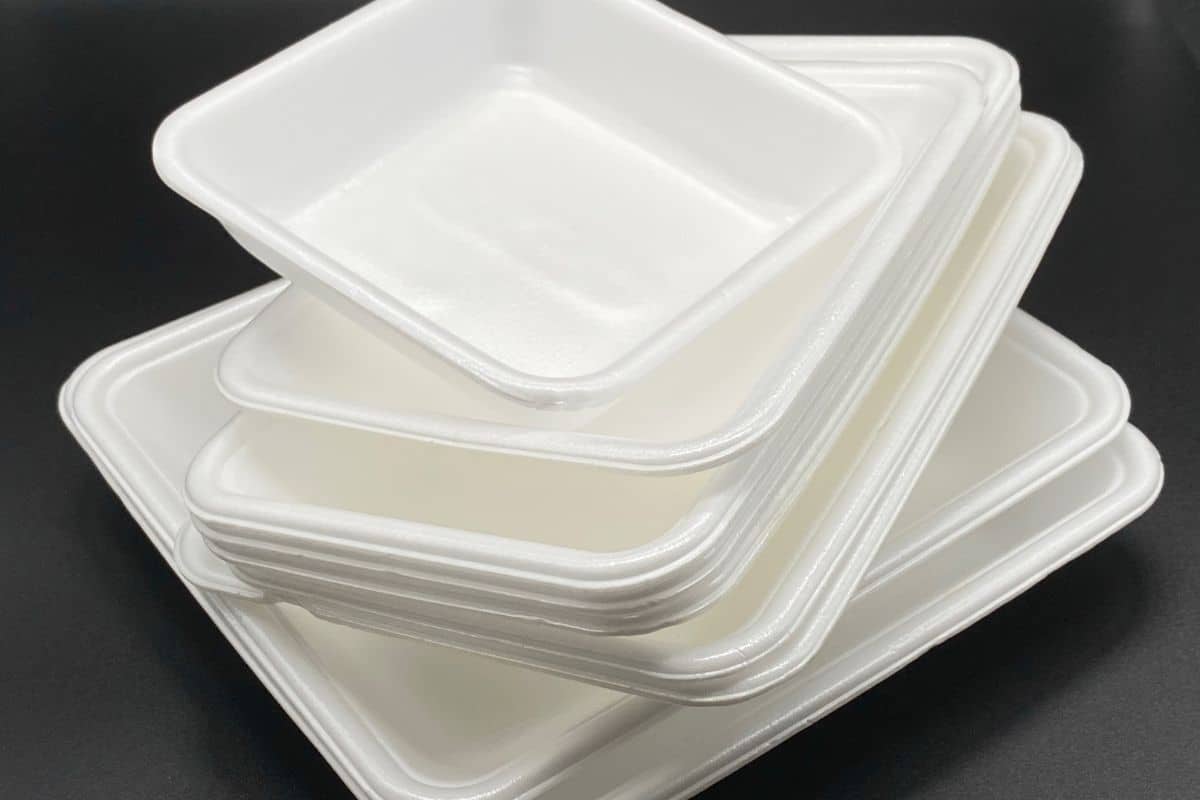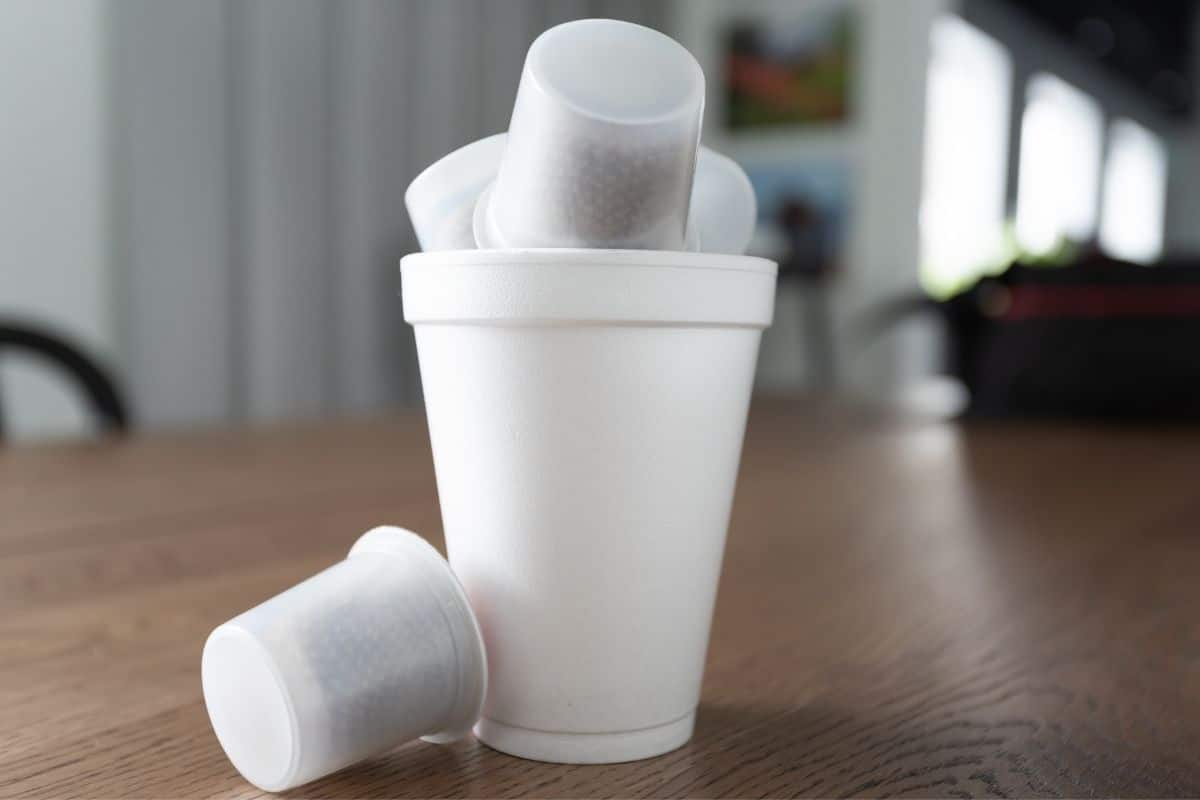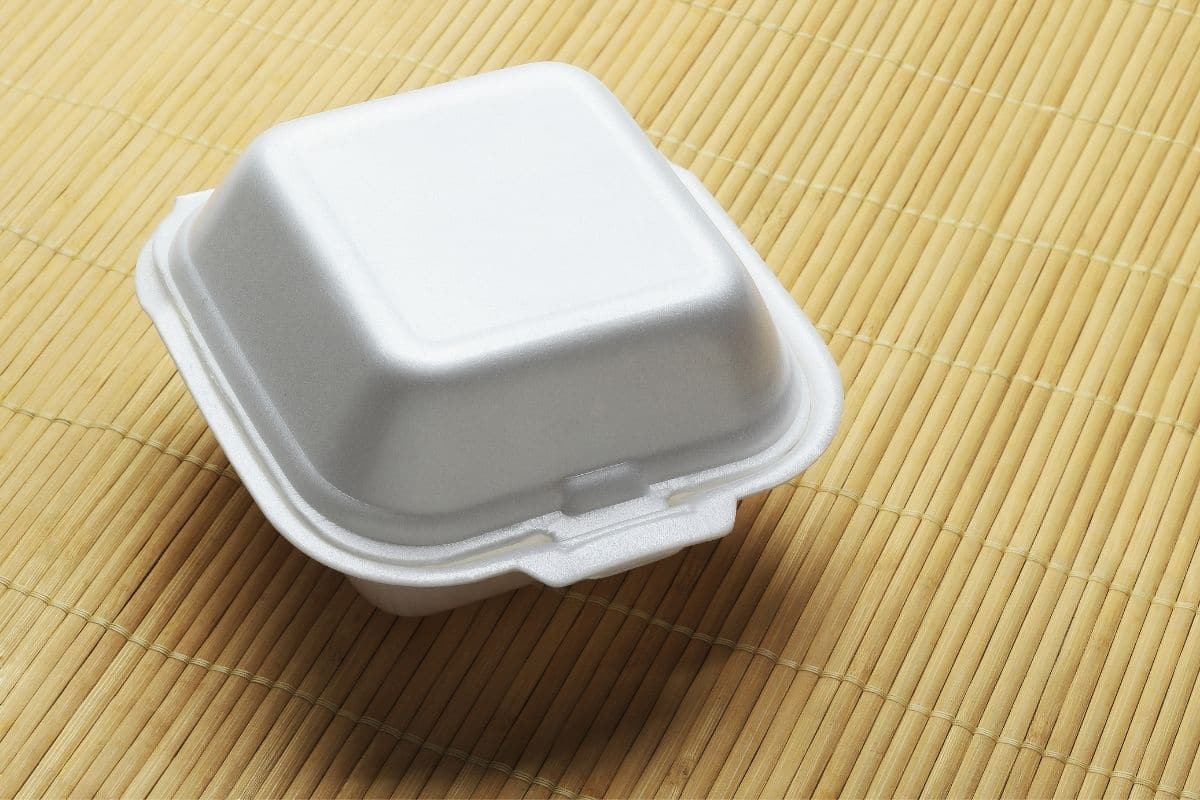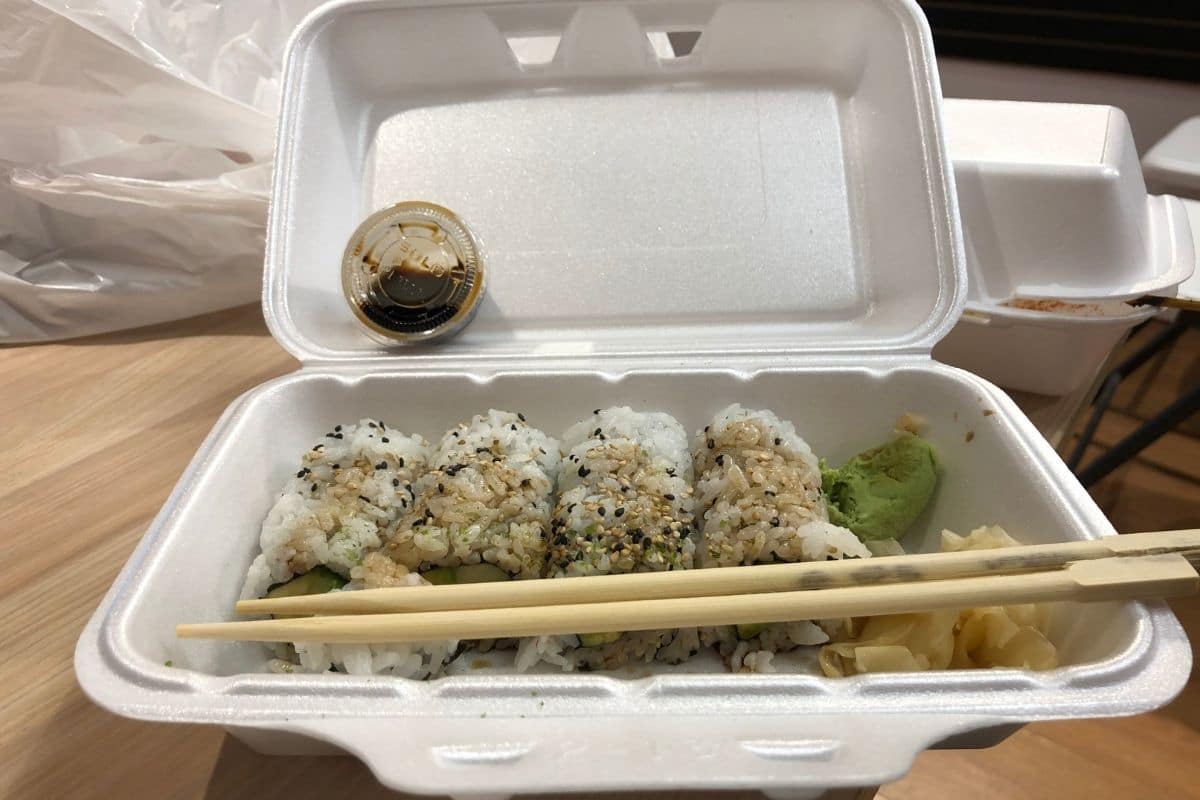
Well, folks, this is one of those REALLY complicated questions. There are many different types of Styrofoam, different container types, and different makes of styrofoam. Styrofoam can be added to other materials, and there are even questions about reheating food in Styrofoam.
So to help you answer all of your questions about whether or not to microwave Styrofoam, instead of giving you a yes or no answer, we’ll break it down by category of plastic foam.
In each category, we will explain why you can or can not microwave that particular type of Styrofoam, as well as give you any relevant information we can about doing so.
We hope this helps to clear up some of the confusion surrounding Styrofoam and microwaves for you.
Can You Microwave Styrofoam Cups?
The answer to this question used to be a resounding NO across the board. Nowadays, with the advent of new technologies, the answer is somewhat better now at a “reasonable maybe.”

The reason the answer has traditionally always been no is that traditional Styrofoam is a form of plastic. It is made porous and has numerous chemicals inside it.
The problem that occurs when you heat Styrofoam in a microwave is that it will quickly melt, even after a few seconds. This does two things. First, it degrades the integrity of the cup. Second, as it begins to melt, Styrofoam can release all sorts of chemicals into whatever is inside the cup.
While these chemicals might not make you sick in small doses, they can be harmful over time and result in serious illness.
Thankfully, more modern Styrofoam's have come out that are microwave safe. The general rule of thumb is to look for the microwave-safe logo on the cup. It will usually look like a tiny microwave with little waves coming out of it.
If your cup has this, you’re safe to microwave it. If not, it is best to avoid the microwave altogether and try to heat your beverage another way.
Can You Microwave Styrofoam Plates?
So, much like their cylindrical cousin, Styrofoam plates face many of the same problems as the cups. If you’re using traditional Styrofoam plates, then you’ll want to avoid the microwave like it’s on fire.
If, however, you have the packaging to your plates and you know that they are indeed microwave safe, then, by all means, go ahead and microwave away.
You still want to be careful about using a microwave. Like we talked about with the cup, most Styrofoam has a low melting point. For plain Styrofoam, that melting point is 240 degrees Celsius, but it will actually start to sag, bend, and warp at as little as 80-100 degrees celsius.
Even if your cups or plates are microwave safe, we urge you to use caution and only microwave in short intervals as they will still come out extremely hot, and prolonged microwaving may still melt them.
As always, be safe and handle things with care when microwaving them.
Can You Microwave Styrofoam Takeout Boxes?

This is one of those times where a little bit of misinformation can make people confused about whether something is safe to microwave or not.
It is perfectly logical to think that Styrofoam takeout boxes are fine in the microwave because, after all, they bring you your food in them while it’s piping hot. The problem with that little bit of information is that they don’t tell you why you can hold hot food but can’t microwave the styrofoam.
The reason you can carry hot food in a Styrofoam takeout box or a plate or cup, for that matter, is that the Styrofoam doesn’t react to what it’s holding; it reacts to actively being heated in the microwave.
When you heat Styrofoam in the microwave, the polymer (plastic compound) particles start to expand. When they reach a specific temperature, they begin to change shape and ultimately melt.
Instead, when you’re ready to reheat, place your food on a microwave-safe dish and reheat it on that, and you can put it back in the takeout box if you need.
How Long Can You Microwave Styrofoam?
If you’re going to microwave something in Styrofoam because you’re short on time or out of options, then the best advice we can give is no more than 30 seconds on medium power. Any higher power or a longer time, and you will most certainly melt the Styrofoam.
As we stated above, there are microwave-safe Styrofoam options, and these are a much better choice.
Microwave-safe Styrofoam should be able to handle standard reheating, so long as you don’t microwave them for too long (by that, we mean half an hour), you shouldn’t have to worry about the type of problems that traditional Styrofoam has.
Can You Microwave Styrofoam Containers?

Much like with plates, cups, and takeout boxes, the answer to this question depends on whether or not the Styrofoam is microwave safe. Microwave-safe styrofoams don’t melt as easily or release harmful carcinogenic chemicals, like Bisphenol A, a toxin that can seep into your food.
There are actually seven types of Styrofoam. Each one is a combination of different materials. Certain ones are considered particularly dangerous and toxic when placed into a microwave.
Unfortunately, one of the ones in this group is Polystyrene, which is what almost every Styrofoam container is made out of. We’ll break down the types of Styrofoam and what they’re called later in this post.
Can You Microwave Food in Styrofoam?
So, again this is one of those complicated answers. Yes, if it is microwave-safe Styrofoam, then you should have no trouble at all warming your food in it.
If it is not, then our advice is not to microwave food in it at all. However, if you must microwave your food in a Styrofoam container that is not marked microwave-safe, do so for as short a time as possible and on medium power or lower.
As long as the Styrofoam doesn’t begin to melt, you should be safe. The longer you microwave and the higher the power setting or wattage of your microwave, the more you risk the Styrofoam melting.
The melting of the Styrofoam is what will release the harmful chemicals, so keep an eye out if you do microwave your food in any kind of Styrofoam container.
Can You Microwave Coffee in Styrofoam?
Unfortunately, coffee is no different from any other food or beverage you put in a Styrofoam cup or other type of container. The only way to be certain it’s safe to microwave it is if you see the microwave-safe symbol on the packaging.
If you want to warm your coffee up, we recommend using a microwave-safe cup or mug and then transferring the hot coffee back into the Styrofoam cup if you want to.
As we stated earlier, it’s perfectly fine to hold hot things in Styrofoam, so long as you aren’t trying to actively microwave them.
Styrofoam cups, plates, and containers are great for holding just about anything, hot or cold; the only real issue is when the Styrofoam temperature changes rapidly.
We won’t get too science-y on you, but the basic idea is that any quick change in temperature that happens to Styrofoam causes the makeup to change. This change in the makeup is what causes the harmful toxins and chemicals to come out in your foods and drinks.
Can You Microwave Styrofoam 6?
Styrofoam Number 6 is one of the classifications of Styrofoam and is also known by its chemical name, polystyrene. This is the most common type of Styrofoam there is, and in general, you cannot microwave it unless it says microwave safe on the packaging.
The reason it is called Styrofoam 6 is that it is a type of plastic, and on the table of recyclable plastics, #6 is polystyrene. We won’t go into too much detail, but just as a bit of a guide, we’ll break down the seven recyclable plastics.
1. Polyethylene Terephthalate (PETE)
This is the type of plastic you’d see in your soft drink bottles, water bottles, and peanut butter jars. These types of products contain some chemicals but are safe for food.
2. High-Density Polyethylene (HDP)
This type of plastic is used for your milk jugs, shampoo and conditioner bottles, and some household cleaning supplies. These are food-safe but shouldn’t be microwaved.
3. Polyvinyl Chloride (PVC)
You’ve probably heard of and used plenty of PVC. PVC is used in plastic piping and in the manufacture of children’s toys and other products. This material is not typically considered food safe or able to go in the microwave.
4 Low-Density Polyethylene (LDPE)
This is the type of plastic that most wrappings are made of. Wrappers around food packaging, grocery bags, and other items are all made of LDPE. Sometimes considered food-safe, but you should not microwave it.
5 Polypropylene (PP)
This is a commonly used type of plastic for several things, including food containers, rope, straws, and bottle caps. While it is safe to put food in, you shouldn’t try to microwave it.
6 Polystyrene (PS)
This is what everyone commonly calls Styrofoam. You may not know that Styrofoam is actually a brand and not a type of plastic unto itself. That’s why we’re making the distinction between the different types for you here.
7 Other
Just like it says, anything that is plastic but doesn’t fit in one of the other categories. There’s no real way to tell whether you should put food in something or microwave it without checking the label.
That’s it. Those are the seven types of plastics so that you know at a glance what you’re looking at, and you know what it means when someone says Styrofoam #6.
Final Thoughts
Well, that’s all, folks. Hopefully, we’ve covered everything you ever wanted to know about microwaving styrofoam and more. Now you’ll have no trouble when deciding whether or not to stick that plate, cup, or container into the microwave.
Sources:
https://millerrecycling.com/plastics-recycling-numbers/
Harvard Health Publications, “Microwaving Food in Plastic: Dangerous or Not?”
